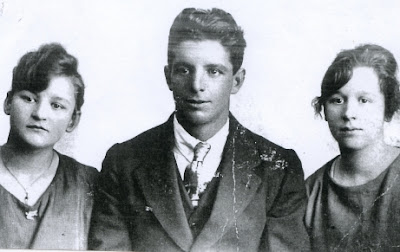On 17 October 2013, the first post went live on the blog ‘First World War in County Durham’, which went on to become the Durham at War blog on 15 August 2014. It was created to support the Durham at War project and website, though it took a while before it settled into its weekly Friday postings, having included Movember Mondays, and Weather Wednesdays in the early days.
 |
| D/DLI 2/18/24(89) Sergeant Major Chaplin of the 18th Battalion, Durham Light Infantry taken at Cocken Hall, 1914 |
Just over five years later, on 21 December 2018, we are at the last post, no. 268. The Durham at War project was originally due to end on 31 December 2018, but HLF have allowed a small extension, to spring 2019, to tie up the project. The project staff will be staying on, but in a more limited capacity, and so the decision has been made to end the blog in line with the original end date. It will still be available to read, but there will be no more updates.
I’d like to say a big thank you to you all for reading. Up to 18 December 2018, there have been 35961 page views, the two biggest days being on 10 September 2014, when Durham at War was officially launched, and 11 November 2018, the centenary of the armistice.
Over the lifespan of the blog, 82% of readers have been from the UK, with 75% of these being from the north east, though the proportions have varied in each quarter. The highest number of readers from outside the UK come from Canada and Australia. This is unsurprising as the project has shown how many people had emigrated from County Durham to these countries prior to the war. The USA and France also feature highly.
The topics over the five years have been wide ranging. It’s time to take a look back.
Volunteers have contributed 44 posts to the blog. These have been either on their personal research or their experiences. Sue T wrote about transcribing the prisoner of war diary of Captain PHB Lyon of 6th Battalion, Durham Light Infantry.
In October 2015, Jean Longstaff wrote about what has become her specialism, researching the Canadian soldiers of County Durham.
Candela Camiño López was an Erasmus intern who joined the project for three months at the end of 2015, and wrote a piece on her time with us.
John Sheen, local military historian, wrote several blogs for us on topics such as the Tyneside Irish and the Somme, and the unexpected places his research has taken him.
Carol and Andrea spoke at the 2016 Durham at War conference on their great-grandfather, Theodor Gotthilf Fiedler, who was a German pork butcher in Shadforth. In August 2016, they gave us a three part write up of their visit to Germany for the Pork Butchers’ Descendants Reunion.
 |
| Frieda, Theodor Jr, and Caroline Fiedler, Theo Fieldler's children, from Carol Hunt's family collection |
David D wrote about his cycling tour of the battlefields of France and Belgium. Volunteers are also responsible for many of the military posts that go beyond the Durham Light Infantry. David D also wrote about the boy sailors of the Royal Navy, and the Royal Naval Air Service. Fiona Johnson wrote about the Royal Flying Corps, in which I learned about Roland Garros, for whom the tennis tournament is named.
Steve Shannon wrote about the County Durham soldier who was killed during the Easter Rising in Dublin, while serving with the Royal Dublin Fusiliers. I looked at the Chinese Labour Corps, the Merchant Navy, and the WAAC and QMAAC.
 |
| D/DLI 7/424/2(28) Soldiers of the 6th Battalion The Durham Light Infantry standing beside a railway engine, en route to France, taken by PHB Lyon, April 1915 |
Of course, it wouldn’t be Durham at War without stories about the Durham Light Infantry. The blog covered a lot of the battles that the regiment was involved in:
Second Battle of Ypres – this is one of the most viewed series of posts on the blog, looking at the territorial battalions of the DLI leaving the UK and going straight into battle in 1915. The series was written to coincide with an exhibition at the Record Office, and looked at the participation of each battalion in the battle.
Battle of the Somme, entries include the DLI in the battle, and a personal encounter with a veteran of the battle.
Passchendaele (Third Battle of Ypres)
The German Spring Offensive, the beginning, the Battle of Estaires, and the Third Battle of the Aisne
Food has been a recurrent theme on the blog. From eating fresh oranges and milking a cow under shell fire to an unforgettable trench Christmas dinner recipe. Much of Captain PHB Lyon’s prisoner of war journal focused on food.
There were other stories of DLI men in prison camps, such as Henry Wilkinson who kept a list of all the books he read, and Arthur Leggett, who escaped from a camp in Wermelskirchen, Germany.
 |
| Stamps from one of Connie's postcards home, The Leybourne Family |
Angus Leybourne, an officer with the DLI, was one of the first prisoners to be sent to Switzerland for internment. Another popular series of posts concerned the story of his, and Connie Kirkup’s, Very British Romance. The couple’s letters were loaned to us for the project, and volunteer Margaret Eason, who helped transcribe them, was so taken, that she wrote a 14 part series which the blog featured over a year.
The blog also included posts about prisoners of war in County Durham. After I did some research into the men who died at Harperley Camp, in April 2016, the Commonwealth War Graves Commission corrected the name of one of the soldiers after reviewing evidence submitted from parish records held at the Record Office. There was also the two German soldiers who escaped from a camp in Wales and were found in Hartlepool.
Other stories from the home front included Munitionettes football, a volunteer's post on conscientious objectors, and another volunteer on the Quakers.
Over the years, the blog covered events such as International Women's Day, International Nurses' Day, and 100 years of women being able to vote. The blog looked at the 400th anniversary of Shakespeare's death in 2016, by reporting on events held in Sunderland in 1916 to mark the tercentenary.
There were several posts on summer, from 'The Edwardian Golden Summer' of 1914, to what to do with the children during the school holidays in 1918. In 2016, the blog covered the introduction of British Summer Time a hundred years' previous.
 |
| D/DLI 12/5/3/2 Crop from 34th Division's Christmas card, 1916 |
At the other end to summer, and timely for this post, there are a lot of entries about Christmas.
The blog has still more stories than this trip down memory lane covers. I have learnt so much from writing the blog over the last five years, and I hope you have learnt something too. Once again, thank you for reading.





